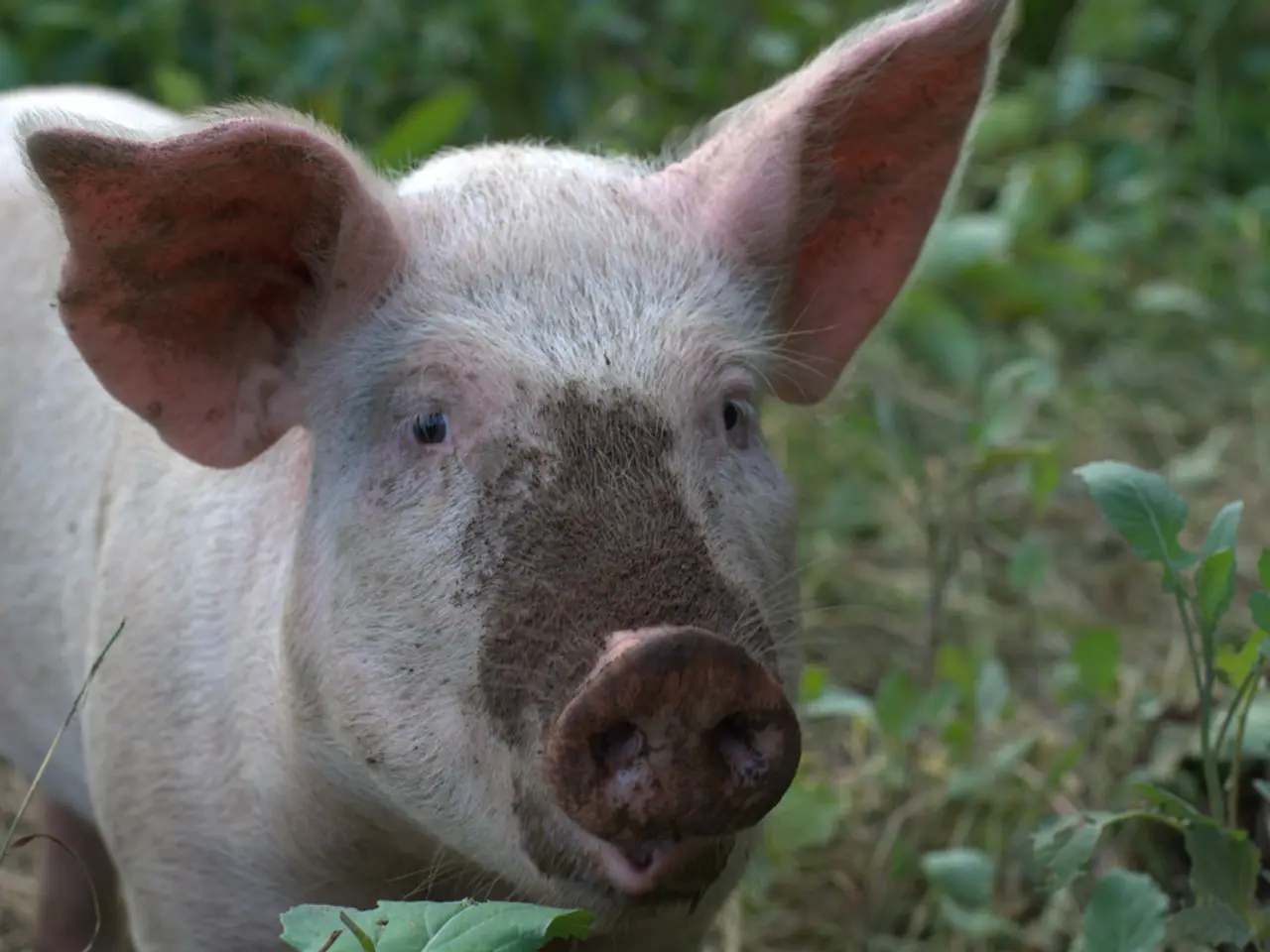A comprehensive list of edible items for guinea pigs
In the world of small pets, guinea pigs have a unique dietary requirement that needs to be met for their overall health and happiness. A balanced diet for these adorable creatures should include a variety of foods, with a focus on fresh produce and hay.
First and foremost, guinea pigs should have unlimited access to good quality grass hay, such as Timothy or Orchard grass hay. This hay, which should make up about 80% of their diet, is essential for supporting digestion, dental health, and mental stimulation. Elderly guinea pigs might find Orchard hay, which is slightly softer than Timothy hay, a better choice.
A small amount of pellets, around a quarter of a cup per day for adults, is also necessary. Fresh vegetables should be offered daily, with an emphasis on those rich in Vitamin C. Safe options include dandelions, rocket (arugula), coriander, mint, watercress, and various types of peppers. However, it's crucial to feed these vegetables in moderation due to their laxative effects or high calcium content.
Fruits, such as berries and kiwi, can be given as occasional treats, but remember that these foods contain natural sugars. Tomatoes, when given in moderation, are also a treat, but the plant should not be given to guinea pigs.
Some vegetables, such as broccoli, should be fed carefully due to the risk of bloating and digestive upset. Spinach, while rich in Vitamin C, contains oxalates that can cause urinary issues. Carrots, another high-sugar food, should be given in moderation, with a single slice a few times a week being enough.
Eggplant can be given as an occasional treat, but beware that eggplant leaves and stems are toxic. Cilantro is a healthy green for guinea pigs and a good source of vitamin C, but the amount should depend on the breed of the guinea pig. Peas and pea shoots can be given in moderation, while celery should be given as an occasional treat, chopped into thin, manageable slices.
Fresh grass is excellent for guinea pig health, but grass cuttings that have been left before being given to your pig are not suitable as they can ferment and cause bloating. Cucumbers are a good source of vitamins, minerals, and water for guinea pigs, especially in hot weather, but should be fed in moderation due to their high water content.
Clover leaves and flowers of red clover are high in calcium and good for growing pigs, while white clover is great for pigs of any age. However, clover hay should not be fed as it is too high in protein. Romaine lettuce can be fed in a ½ cup to 1 cup portion at a time.
Apples can be fed in moderation, and Cleavers (also known as goosegrass or sticky willy) are a common plant that can be foraged for guinea pigs, but should be picked away from areas treated by herbicides, pesticides, or near animal waste and washed thoroughly before feeding.
Raspberries, a type of berry safe for guinea pigs, should make up less than 5% of a guinea pig's diet due to their high sugar content. A small handful is enough for a single pig. Chamomile is a great herb for guinea pigs and can be added to hay to provide enrichment.
Unseasoned popcorn can be given to guinea pigs as a special treat on occasions like their birthday. Pineapple is high in sugar and should be fed very rarely as a sweet treat for guinea pigs, as it contains enzymes that can cause gas and mouth sores.
Remember to avoid overfeeding high-calcium plants regularly to reduce the risk of urinary tract issues. Also, introduce new plants carefully, confirming their identification as some wild plants can be toxic.
By following this guide, you'll ensure your guinea pig enjoys a balanced diet, promoting their health, happiness, and longevity. Happy feeding!
- Grass hay, such as Timothy or Orchard grass hay, makes up about 80% of a guinea pig's diet, ensuring digestion, dental health, and mental stimulation.
- Fresh vegetables, rich in Vitamin C, like dandelions, rocket (arugula), coriander, mint, watercress, and various types of peppers, should be offered daily to guinea pigs, but in moderation due to their laxative effects or high calcium content.
- Fruits, such as berries and kiwi, can be given as occasional treats, but remember that these foods contain natural sugars.
- Romaine lettuce can be fed in a ½ cup to 1 cup portion at a time to guinea pigs, while clover leaves and flowers of red clover are high in calcium and good for growing pigs.
- Raspberries, a type of berry safe for guinea pigs, should make up less than 5% of a guinea pig's diet due to their high sugar content, with a small handful enough for a single pig.




